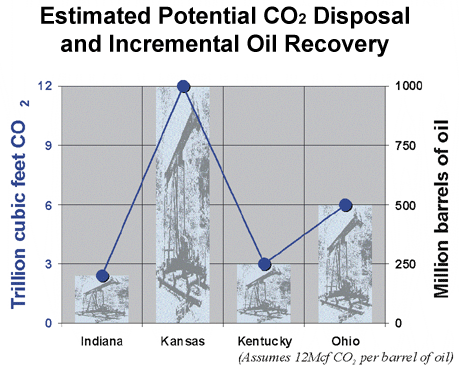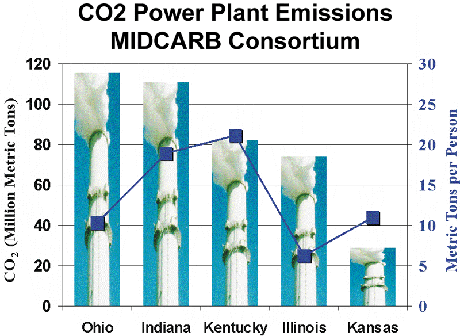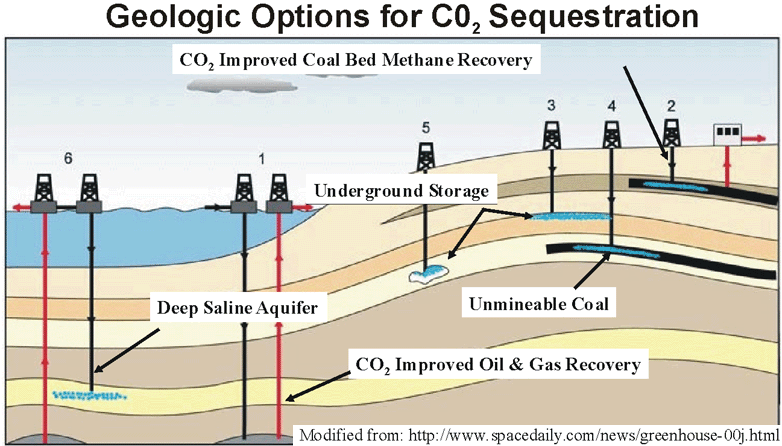
Midcontinent Interactive Digital Carbon Atlas and
Relational Database (MIDCARB)
Kansas Geological Survey
Open-file Report 2002-7

|
|
Kansas Geological Survey Open-file Report 2002-7 |



MIDCARB concentrates on the geographic distribution and technical aspects of geologic storage options for CO2 sequestration, including those that recycle carbon back to its source in natural geologic formations. These include CO2 storage in geologic structures such as oil and gas reservoirs, coal seams, and saline aquifers. Producing oil reservoirs, using CO2 miscible and immiscible flooding, offer some of the most attractive targets for CO2 sequestration.
Carbon dioxide sequestration in unmineable coal seams, like CO2 enhanced oil recovery, would provide both a place to store CO2 and a method to increase production of a highly usable fossil fuel. Extensive Carboniferous coal-bearing strata underlie all five states in the MIDCARB consortium. Although many coal seams are mineable, numerous seams are currently uneconomic and inaccessible due to coal quality, sulfur content, and technological or land use restrictions. The coals of the Midcontinent are relatively flat lying, undisturbed by large faults, and commonly bounded above and below by several feet of rock with low permeability. The potential is high that Midcontinent coals can act as high-quality, long-term geologic sinks for CO2 while enhancing methane gas recovery.
Unconventional and depleted or nearly depleted natural gas reservoirs may be used to sequester CO2 at a ratio of one-to-one of methane previously produced. Depleted gas fields could be ideal reservoirs for CO2 sequestration due to their proven ability to store gases for geologic time periods.
Saline aquifers have great potential capacity for the long-term sequestration of greenhouse gas emissions including CO2. All MIDCARB states have extensive saline aquifers that have high potential for aquifer disposal of CO2. Many of these aquifers form a continuous regional hydrodynamic system with known oil and gas reservoirs (e.g., Arbuckle Group and Mississippian in Kansas).
|
|
e-mail : webadmin@kgs.ku.edu
Last updated March 2002
http://www.kgs.ku.edu/PRS/Poster/2002/2002-7/P1-04.html